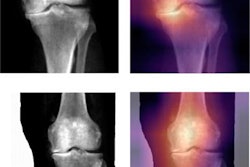
Dual-energy x-ray absorptiometry (DEXA) exams show that Black women are less likely than white women to lose visceral adipose tissue (VAT) after pregnancy, according to a study published May 11 in Obesity.
A group led by Dr. Xuewen Wang of the University of South Carolina in Columbia found that visceral adipose tissue -- also known as the "hidden fat" stored inside the abdomen -- decreased in white women one year after giving birth, but not in Black women.
"The mechanisms for the differences among Black and [white] women in postpartum body composition changes need to be investigated," the researchers wrote.
Increases in visceral adipose tissue are known to be strongly associated with risks for metabolic abnormalities, including heart disease and cancer. While previous research has shown that Black women are more prone to postpartum weight retention compared with white women, no DEXA studies have specifically examined visceral adipose tissue in Black women, according to the authors.
"Given the differences among Black and white women in weight retention, it is important to examine racial differences in body fat changes after delivery," they stated.
To that end, the researchers enrolled 193 women (96 Black and 97 white) from the Columbia, SC, area from October 2018 to January 2020. Of these, 78 completed the full study, which included DEXA scans at six to eight weeks postpartum and again at six months and 12 months. The investigators measured fat mass, lean mass, bone mass, and percent body fat in the women's whole body and in specific body segments (trunk, arm, leg, android, and gynoid), with VAT estimated by the scanner's software.
In white women, fat mass, percent body fat, and appendicular fat continued to decrease from baseline to six months and 12 months postpartum. Trunk, android, and gynoid fat decreased, and the decrease mostly occurred between baseline and six months. At 12 months, these measurements remained lower than at baseline.
In Black women, fat mass, percent body fat, and appendicular, android, and gynoid fat did not change and were not different between any two time points. However, trunk fat was higher at 12 months than at baseline and VAT increased. This increase mostly occurred between six and 12 months, and was highest at 12 months, according to the findings.
"Our data in Black women are unique, as we are not aware of other studies that have specifically examined body fat in the postpartum period longitudinally in Black women," the researchers wrote.
The study suggests there may be preferential retention of fat in the trunk and abdominal area in Black women up to one year after giving birth. However, additional research is warranted.
"Future studies are recommended to further examine the contribution of these factors to body composition in greater detail and whether intervening on these factors could modify postpartum body composition," the group concluded.




















